The Best Looker Alternatives in 2024 (Affordable & Open-Source)
Looking for the best affordable and open-source alternatives to Looker? We take a look at the top Looker alternatives.

Looker is a business intelligence solution that provides an innovative approach for real-time data exploration and analytics. However, despite all its wonderful features, you may find that Looker is not perfectly suited for your team due to its expensive pricing plan and steep learning curve.
For a more comprehensive analysis of Looker, feel free to check its strengths and weaknesses here.
In this article, we will help you curate the top most affordable and open-source Looker alternatives, offering not only their own robust feature sets such as data modeling, self-service analytics, data reusability, etc. but also more flexible pricing plans. Hopefully, after reading our blog post, you’ll find Looker alternatives that best fit your needs.
Metabase - Open-Source BI & Data Visualization
Metabase is an open-source business intelligence and visualization tool that makes analytics accessible to everyone without knowledge of SQL. This Looker alternative lets you ask questions about your data and displays answers in formats that make sense, whether that's a bar graph or a detailed table.
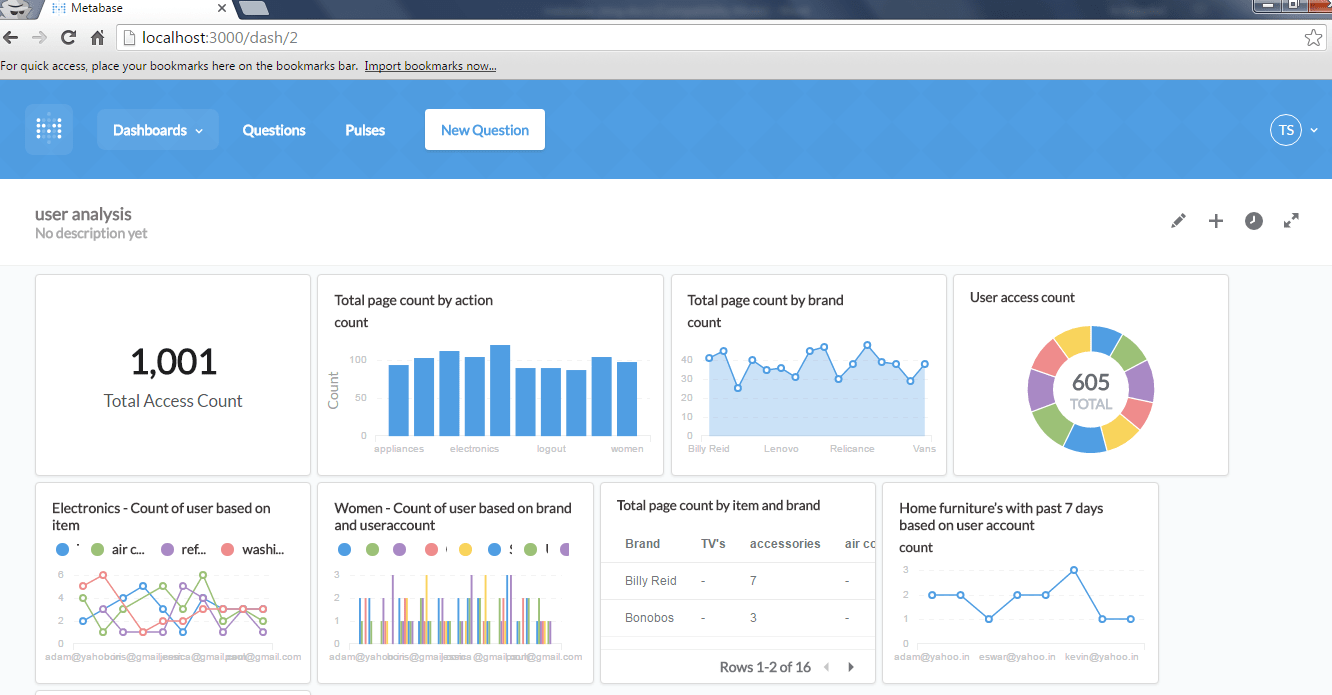
Metabase makes a great alternative to Looker for teams that prioritize quick, exploratory data analysis and ease of use over complex data modeling and deep customization. It's also often preferred by engineering teams and product managers, who may not require the full suite of features offered by Looker.
While Metabase may not offer the same depth in data modeling features or the proprietary semantic layer (LookML) that Looker does, it can integrate with Cube.dev to provide a viable, modern, open-source alternative. Additionally, Metabase's alert feature and its general adequacy for IT-related reporting present a valuable, lightweight solution for teams not requiring the full functionality of Looker.
Pricing: Free business intelligence software
What Metabase offers:
- Free business intelligence tool
- Open-source and lightweight, suitable for small, agile data team.
- Powerful embedded analytics
- Simplified and easy-to-use interface, which is suitable for the less technical-savvy teams.
Metabase's limitations:
- Have to set up up your own server and maintain the infrastructure
- Limited integrations.
- Limited variety of charts and settings
- Limited permission control.
- Not suitable for comprehensive and ad-hoc analytics
- Rudimentary data modeling layer, nowhere near Looker's data modeling.
- No version control. Hard to keep track of who changes what
Holistics, As-Code Business Intelligence Platform
Among Looker alternatives, Holistics is the most architecturally similar, offering code-based semantic modeling layer with self-service data exploration.
However, what set Holistics apart from Looker and other Looker alternatives are:
- Analytics As-Code: Looker's lack of robust metric modeling leads to dependency on derived tables for complex operations, which makes it vulnerable to upstream logic changes (example: dimension name change). With Holistics, data team benefits from a well-designed modeling language (not string-based JSON/YAML/Jinja) with proper typing structure. This enables things like autocomplete, static typing, and module systems (code reusability).
- AMQL: AMQL is a Holistics metric-centric analytics language that provides a higher-level abstraction for defining metrics independently from data tables. AMQL allows data team to build a self-serve interface that’s aligned with business users' mental models (Example: Guided NLQ). It also simplifies complex SQL functions, making advanced analytics more accessible.
- Canvas Dashboard: A canvas-based analytics presentation engine allows analysts and business users to design, consume & explore data in a form that’s more natural to humans’ thinking process.
Pricing: Free trial with paid plans starting from $120/month
What Holistics Offers:
- Gentle learning curve
- Self-service analytics with a drag-and-drop interface for non-technical users
- Centralized data management for data team to prevents data knowledge from being locked to a few individuals
- Powerful data modeling for scalable data analytics stack.
- Powerful delivery capabilities via Email/Slack Schedule and Alerts, Shareable links and Embedded Analytics
- Git version control available: Commit your analytics code to Git and track every change, and perform branching, code reviews to ensure accurate analytics workflow.
- Define business logic, modeling, and datasets using Holistics's custom DSL language (similar to LookML) for analytics
- Seamless dbt integration: Perform data modeling and transformation at dbt layer, and push those definitions to Holistics BI layer
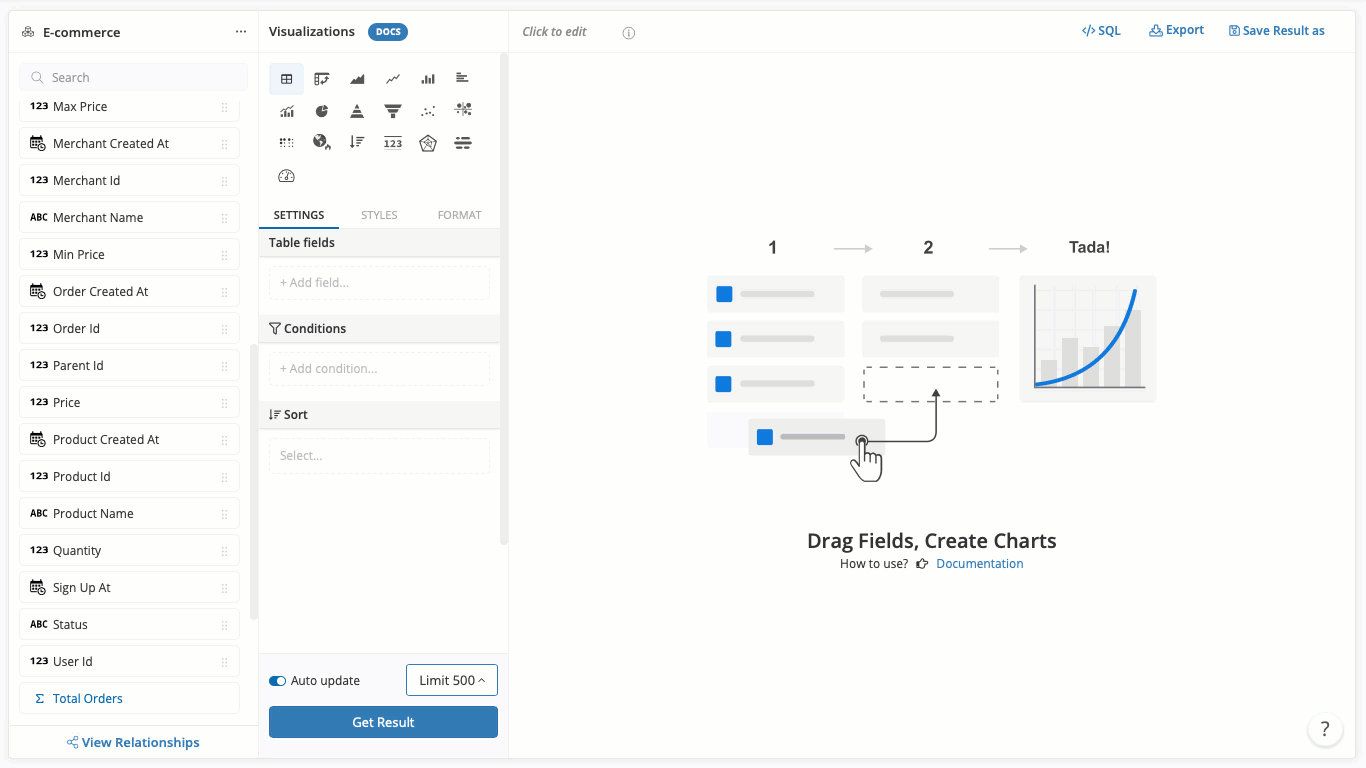
Holistics' Limitations:
- Young product with some features still in progress
- Strong permission control but complicated for small companies
- Doesn't support complicated charts
Here's how an ex-Looker user made the switch to Holistics.

Qilk Sense - Modern Data Analytics Platforms
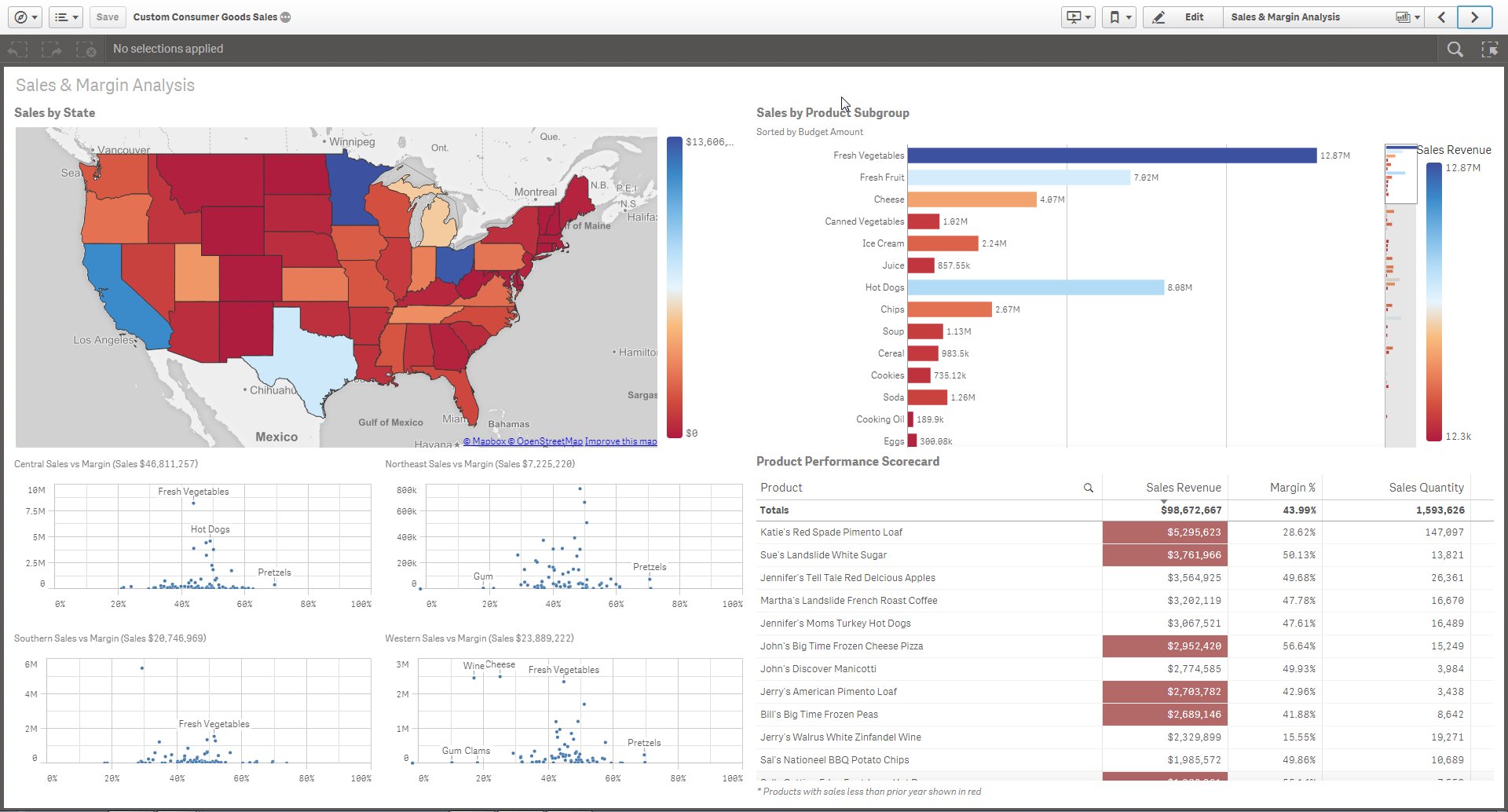
Qlik Sense is a dynamic self-service and data analytics tool that simplifies data exploration for a full spectrum of users. With intuitive data prep, drag-and-drop abilities, and drill-down features, organizations can easily spot and share data relationships and key insights quickly and efficiently.
Pricing: Free and Starting from $15/user per month
What Qlik Sense offers:
- Helpful self-service analytics with a drag-and-drop interface.
- Provide predictive analysis and trend indicators.
- Allow centralized management through centralizing locations for users to develop and sharing apps, data stories, and insights quickly and efficiently.
- Robust mobile apps, designed with a mobile-first attitude.
Qlik Sense's Limitations
- Inflexible data extraction capabilities
- Limited visualization due to lack of some basic charts
- Complicated token pricing model
- Data solution is normally sluggish when working with large data sets
- Non-SQL-based data modeling layer
Microsoft Power BI
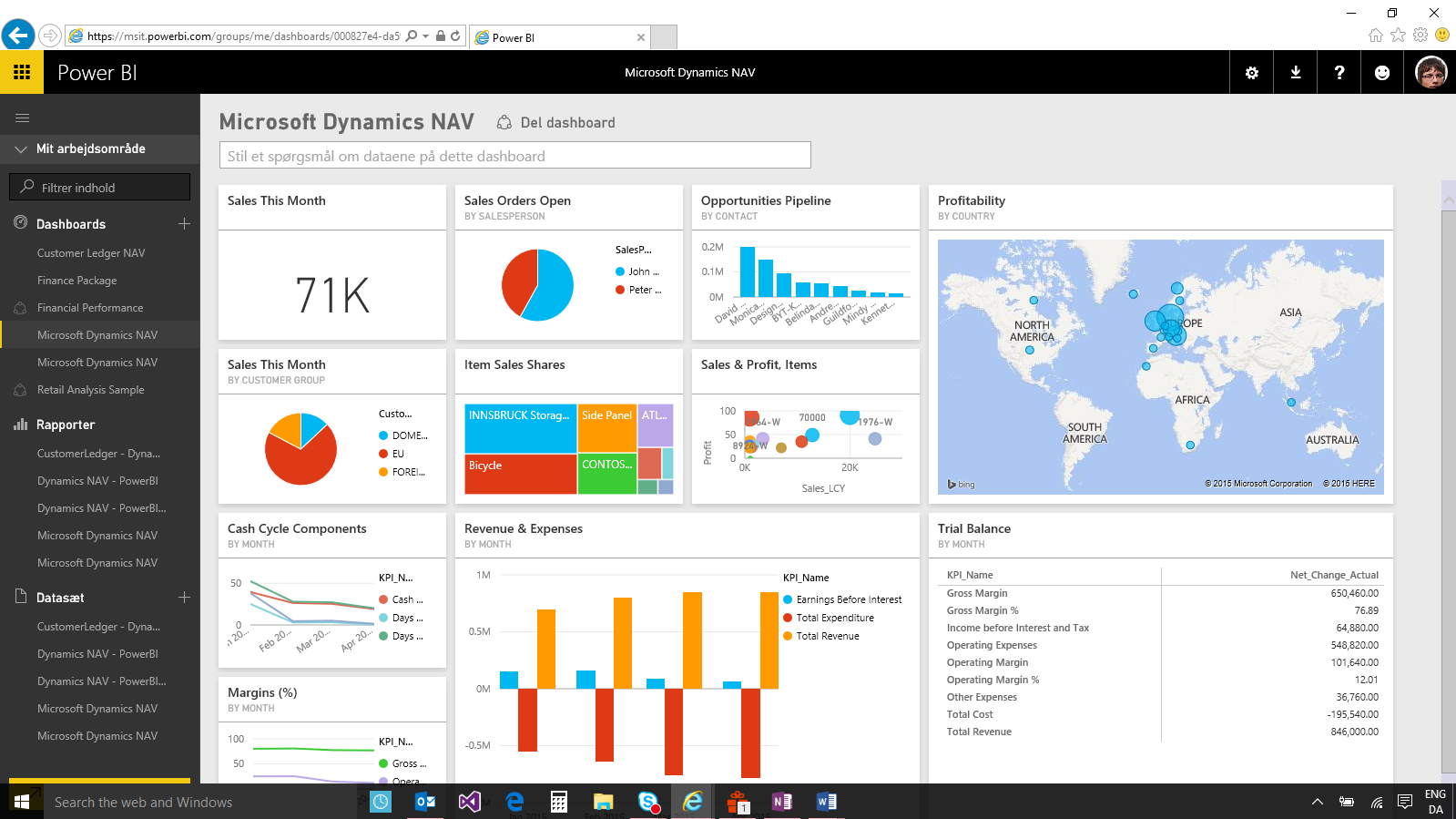
Power BI and Looker are essentially in different BI categories.
| Name | One | Two |
|---|---|---|
| SQL vs Non-SQL | Non-SQL: Tableau, PowerBI, Sisense | SQL: Holistics, Looker, Mode, Redash, Metabase |
| Embedded Datastore vs External Datastore | Embedded: MicroStrategy, Tableau, PowerBI, Sisense | External: Holistics, Looker, Metabase, Redash, |
| In-memory vs In-database | In-memory: Tableau, MicroStrategy, Sisense, PowerBI, etc. | In-database: Holistics, Looker, Redash, Metabase, etc. |
| Modeling vs non-modeling BI tools | Non-modeling: Tableau, Mode, Redash | Modeling: Qlik, PowerBI, Looker, Holistics |
However, if you are looking for Microsoft-centric BI tool with similar capabilities as Looker, then PowerBI makes a great alternative. PowerBI is especially suited for medium businesses or teams with limited resources due to its cost-effectiveness and ease of use.
Similar to other Looker alternatives in this list, Power BI also offers a broad range of customization options for reports and interactive dashboards, making it great for creating engaging presentations. Plus, it can seamlessly integrate with Microsoft products, streamlining workflows for those already using Microsoft tools.
However, PowerBI may face challenges in multi-developer projects and lacks Looker's advanced data modeling, governance and LookML's analytics capabilities.
Pricing: Free and starting from $9.99 per user per month
What PowerBI offers:
- Excel-like and easy-to-use interface with the ability to create and import simple visuals, thus empowering Excel users
- Good report visualization capabilities with numerous data chart types
- Allows data team not only to connect to various data sources but also heavily integrate with Microsoft’s portfolio such as Office 365, Microsoft Excel, Azure, and SQL Server
- Comes with a powerful data modeling layer.
Related reading: Open-source Data Modeling Solutions For Any Data Teams
Power BI's limitations:
- Doesn't handle large data sources well
- Pretty complex to understand and use
- Insufficient BI initiatives, for example, there is no way to publish reports and associated data together with Power BI Desktop
- Users have to learn DAX/PowerM in order to be effective.
- Data models can only be used on Windows machines
- Powerful but heavy
Sisense - Fusion Data Analytics Platform
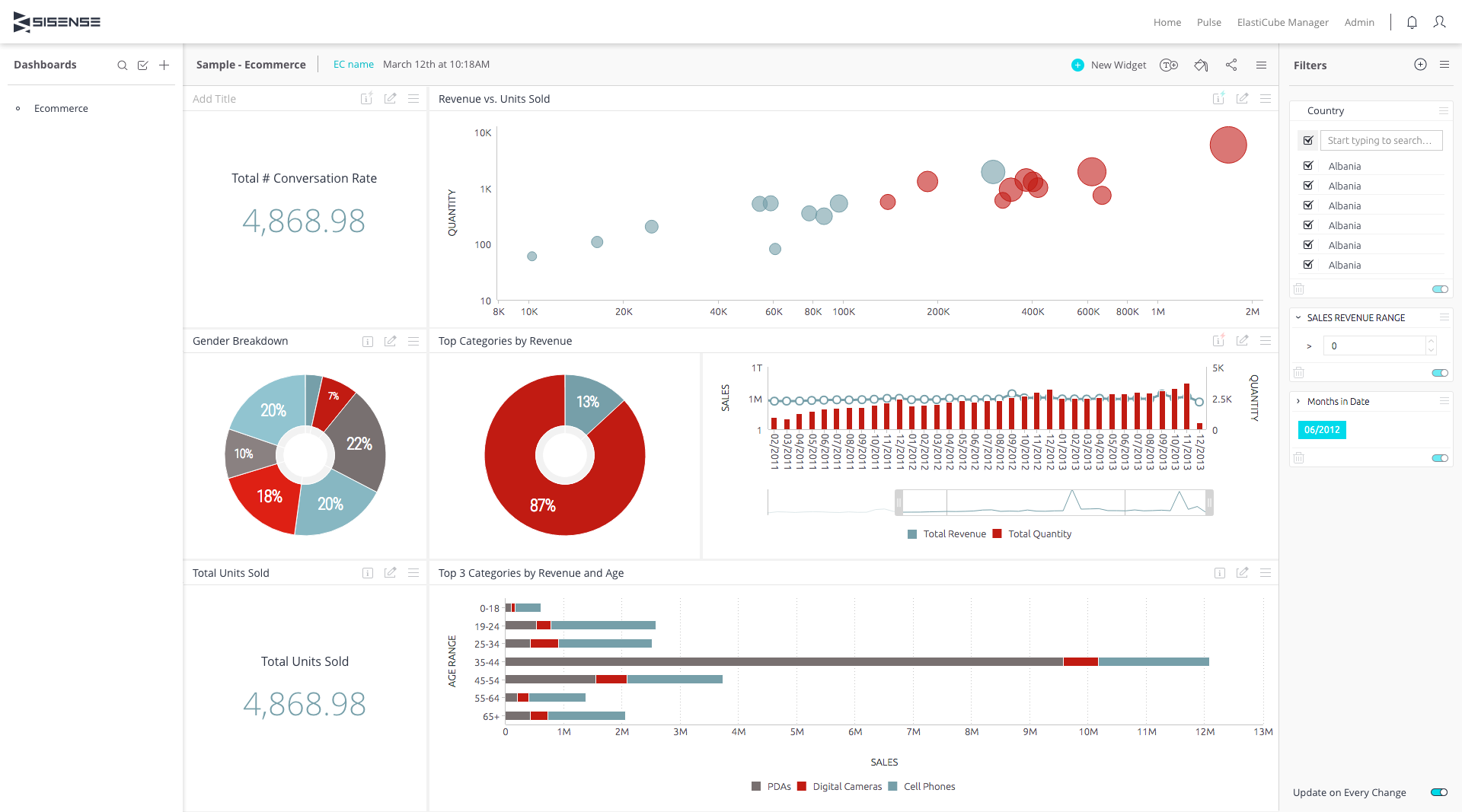
The next Looker alternative that we would like to recommend to you is Sisense. It is a business intelligence platform that helps you come up with data-driven decisions by redefining all aspects of business analytics.
The solution is known for providing instant answers so that you get to reap its benefits, resulting in early ROI delivery immediately. Sisense is easy to use, sporting a drag-and-drop feature, making it one of the most popular analytics solutions of its kind.
Pricing: Not best for Startups, but is a bit more affordable than the Looker pricing plan.
What Sisense offers:
- Offer both an on-premise and cloud-based option
- High ability to work with large datasets by using a columnar database approach, which makes it easier for the Sisense system to pull big queries
- Sisense’s Elasticube™ allowing users to take data snapshots
- Fast implementation and time to insights with well-designed dashboards and various chart types
Sisense's limitations:
- Require high power of server, amount of space and resources
- Require a certain period of time for setup, configuration, and user adoption
- Elasticube functionality tends to be time-consuming and prone to errors, especially with failure to build errors
Lightdash - Open Source Looker Alternative
Lightdash is a relatively new open-source business intelligence solution that can connect to a user's dbt project and allow them to add metrics directly in the data transformation layer, then create and share insights with the whole team.
Often promoted as one of the best Looker alternatives, Lightdash might still have a long way ahead before gaining enough product maturity to be a good alternative to Looker.
As many ex-Looker users pointed out - to be a good Looker alternative, a BI platform should be reliable and mature as BI has a long list of table stake features that need to be addressed before getting to your differentiator. Philosophical differentiator (Open-source direction) is often not enough of a reason for an ex-Looker to make the switch.
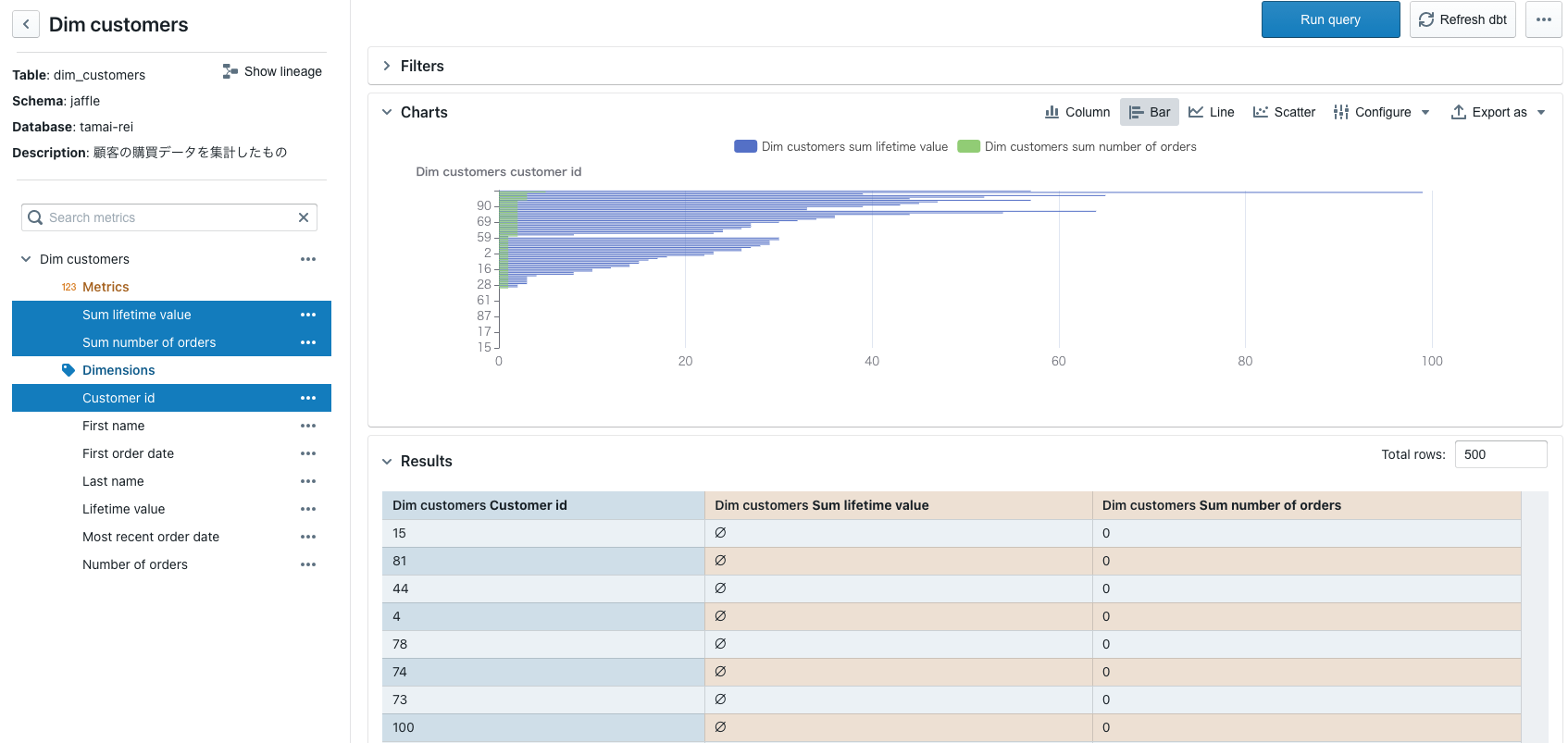
Pricing: Open-source. Hosted plans start at $600/month
What Lightdash Offers:
- Lightdash can be self-hosted or fully hosted by Lightdash. The fully hosted option is not free.
- An unlimited number of users can be added to the project, with unlimited number of charts and dashboards.
- Integration with GitHub, Gitlab & dbt.
- A strong and supportive community of users.
- Dimensions and metrics can be declared in YAML alongside with your dbt project.
- Team collaboration option for cloud and enterprise versions.
- Access management, dedicated account manager, advanced support, and SSO for the enterprise version.
Lightdash Limitations:
- Limited visualizations and chart options.
- Limited interactivity for embedded analytics. No white-labeling.
- Lacking more advanced filtering options for self-service exploration (i.e: Native PoP Comparison, AND/OR filtering, etc).
- Semantic layer integration is available, but not robust.
Learn more: Lightdash Alternative: Similar conceptual design, more mature functionalities
Thoughtspot - AI-Powered Analytics Platform
Thoughtspot makes a good Looker alternative as it's also built for self-service analytics, offering a Looker-like explore-type interface. They have a strong search function that allows users to ask and get answers to data questions using natural language.
One thing that sets Thoughtspot apart from other Looker alternatives is its AI-powered interface which allows business users to ask questions using natural language.
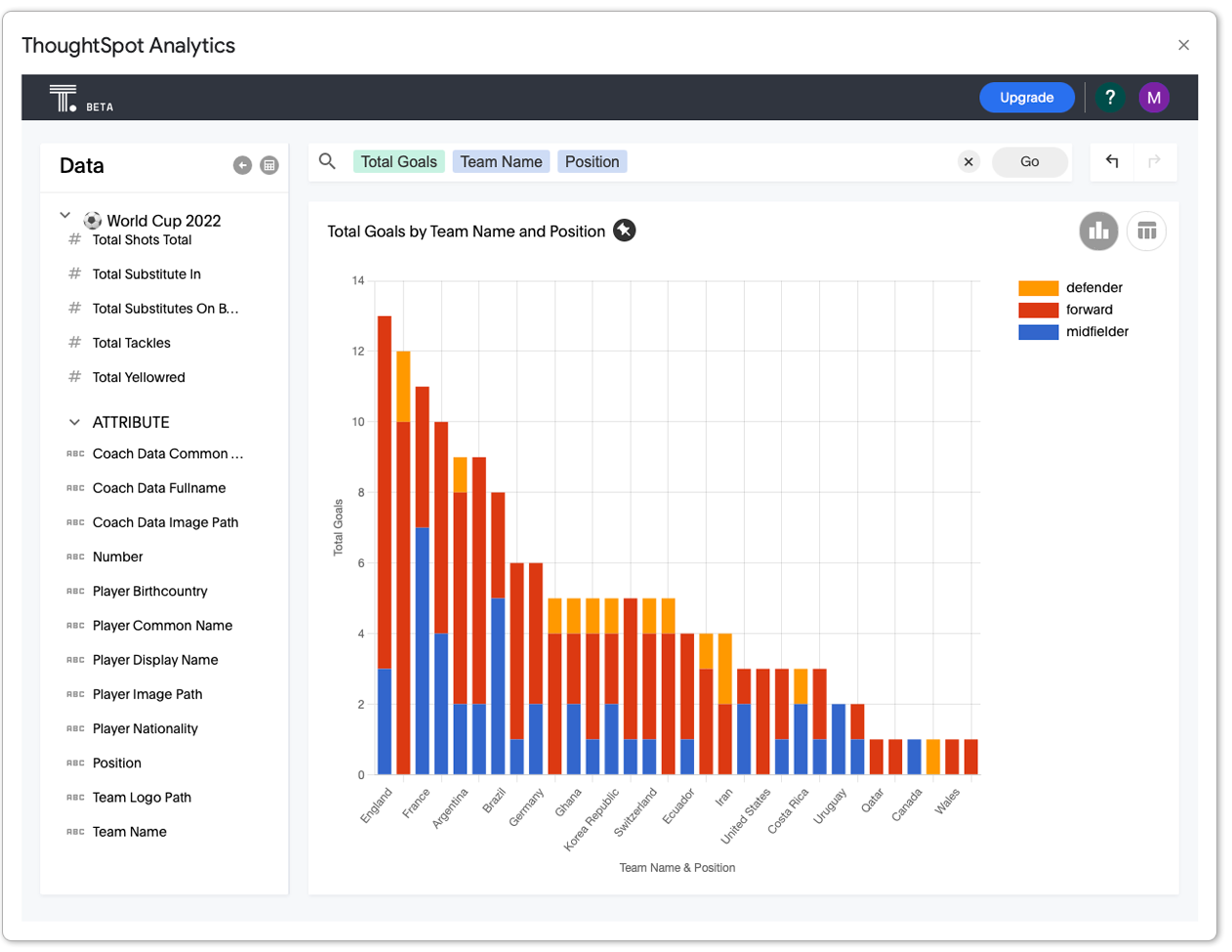
What Thoughtspot offers:
- Natural language search and AI-powered engine for self-service exploration.
- Straightforward, no-code approach to data modeling. While it might not have all the maturity of LookML, it’s user-friendly and continues to get better with new features regularly added.
- Embedded analytics with white labeling.
- Plenty of visualization and exploration options (like cross-filtering, and drill-down) for end users to explore pre-built dashboards. AI-guided suggestions to modify existing answers and discover deeper insights.
- Data delivery and data alerts.
ThoughtSpot Limitations
- UI can be confusing, requiring a lot of clicks to create a formula for testing out on a chart.
- No Git support.
- The data modeling experience is not optimal. For example, creating joins between tables and views can be cumbersome in Thoughtspot.
- High maintenance requires substantial efforts to map the data colums to the most often used user syntax so that the tool can handle natural-language data questions.
- While aiming for a smooth, search-like experience in data querying, ThoughtSpot has faced issues with efficiency, particularly with not caching results which could bump up operational costs.
- Its scripting language, while can control data sets and visuals, is not yet user-friendly and intuitive.
Conclusion
As we've seen, when it comes to choosing the right Looker alternatives for your team, we have plenty of business intelligence options to choose from. We encourage you to contact these vendors directly if you would like to learn more about their solutions, to discover how they might best fit into your team's needs!
For more Business Intelligence recommendation, check out:
What's happening in the BI world?
Join 30k+ people to get insights from BI practitioners around the globe. In your inbox. Every week. Learn more
No spam, ever. We respect your email privacy. Unsubscribe anytime.

